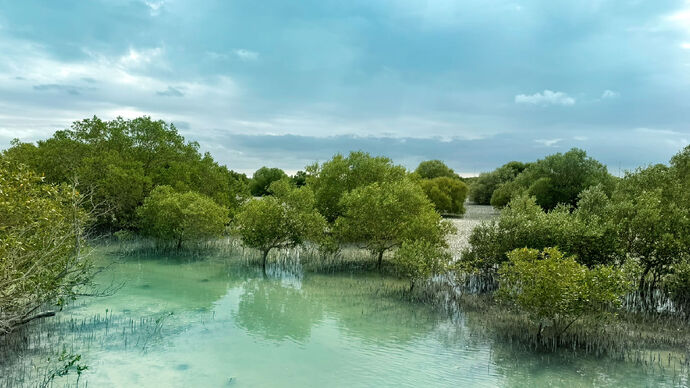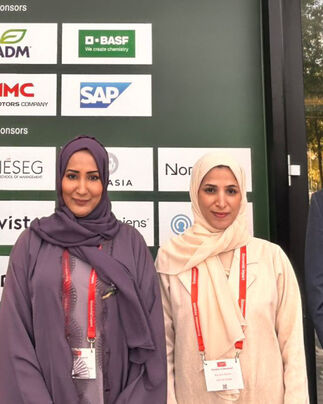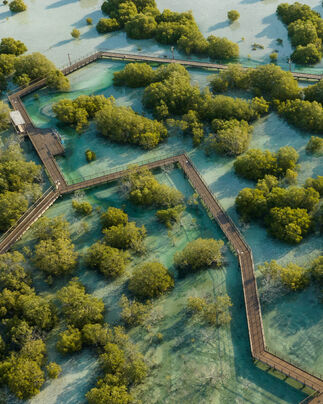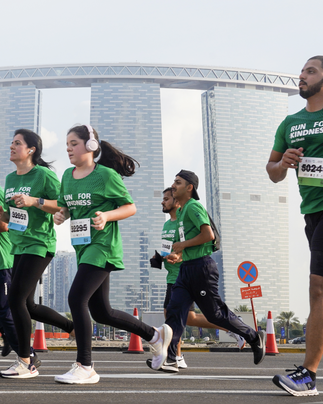As part of the Ghars Al Emarat (UAE Planting) initiative to plant 10 mangroves for each visitor to COP28 UAE, the Environment Agency – Abu Dhabi (EAD) has successfully planted 850,000 mangrove trees along Abu Dhabi’s coastal areas.
The mangrove trees were planted in locations that offered the most suitable environments for growth, including Marawah Marine Biosphere Reserve, Al Mirfa City, and Jubail Island, and will help absorb 170 tonnes of carbon dioxide from the atmosphere annually.
The agency announced the initiative, implemented under the patronage of His Highness Sheikh Hamdan bin Zayed Al Nahyan, Ruler’s Representative in Al Dhafra Region and Chairman of Environment Agency – Abu Dhabi’s Board of Directors, on the occasion of the country’s hosting of COP28 UAE. The initiative pledged to plant 10 mangrove trees for every visitor to the conference, using innovative methods, such as drone seeding. The rate of carbon uptake by trees is estimated at one tonne per 5,000 mangroves. This initiative reinforces the UAE’s commitment to achieving climate neutrality and promoting the adoption of nature-based solutions to reduce the effects of climate change.
Her Excellency Dr Shaikha Salem Al Dhaheri, Secretary General of Environment Agency – Abu Dhabi, said: “This initiative comes as a continuation of the efforts initiated by the emirate of Abu Dhabi to restore mangrove trees in the 1970s, under the guidance of the late Sheikh Zayed, which was an expression of his in-depth knowledge of the local environment and his foresight. This strengthened the emirate’s pioneering role in rehabilitating these important environmental systems.
“Mangroves are among the most productive coastal ecosystems in the world and are therefore very important because they provide a variety of environmental and economic services. Mangrove trees help mitigate the effects of climate change, absorbing greenhouse gases thanks to their ability to store and sequester carbon. Mangroves can absorb up to four times more carbon than trees in the Amazon rainforest.”
Her Excellency Dr Shaikha Salem Al Dhaheri further stated that after more than seven decades, the UAE still greatly values mangroves as a coastal and vital habitat for blue carbon, whose role in supporting biodiversity and in mitigating and adapting to the effects of climate change is extremely important. Mangroves are being researched and studied by EAD, and as Abu Dhabi is home to the UAE’s largest mangrove areas, science-based mangrove restoration efforts are continuing across the emirate.
Her Excellency Dr Shaikha Salem Al Dhaheri said that studies conducted by EAD revealed the ability of mangrove trees in Abu Dhabi to store carbon at a rate of 0.5 tonnes per hectare per year, which is equivalent to 8,750 tonnes at the emirate level, and the energy consumption of 1,000 homes per year.
The Ghars Al Emarat Initiative, created within the framework of the Abu Dhabi Climate Change Strategy, also supports the Abu Dhabi Mangrove Initiative, launched in February 2022, during the meeting between His Highness Sheikh Khaled bin Mohamed bin Zayed Al Nahyan, Crown Prince of Abu Dhabi and Chairman of Abu Dhabi Executive Council, and His Royal Highness Prince William, the Prince of Wales, at Jubail Mangrove Park. It was founded to provide a platform for developing innovative mangrove planting solutions, and contribute to mitigating the effects of climate change, while raising awareness of mangroves’ importance and the necessity of restoring them. The initiative also enhanced the emirate’s position as a leading global centre for mangrove conservation research and innovation.
Ghars Al Emarat also supports the 13th United Nations Sustainable Development Goal (SDG) related to Climate Action, which calls for urgent steps to address climate change and adapt to its effects, as well as national initiatives, including the UAE Net Zero by 2050 strategic initiative, which is in line with the UAE’s goal of planting 100 million mangrove trees by 2030.
Mangroves cover about 176 square kilometres across Abu Dhabi, equivalent to 17,600 hectares (11,200 hectares of natural trees and 6,400 hectares of planted trees), with 2,441,600 tonnes of carbon stored by natural mangroves and 676,480 tonnes by planted trees. This means that more than 3 million tonnes of carbon are currently stored by mangroves in Abu Dhabi.
As well as mitigating the impact of climate change, mangroves help adapt to the challenge, stabilising coasts, protecting against the impact of storms, and reducing coastal erosion. These natural systems protect infrastructure and communities located along the coast. By protecting and restoring mangrove ecosystems, EAD strengthens nature’s resilience and reduces the impact of climate change on communities.










